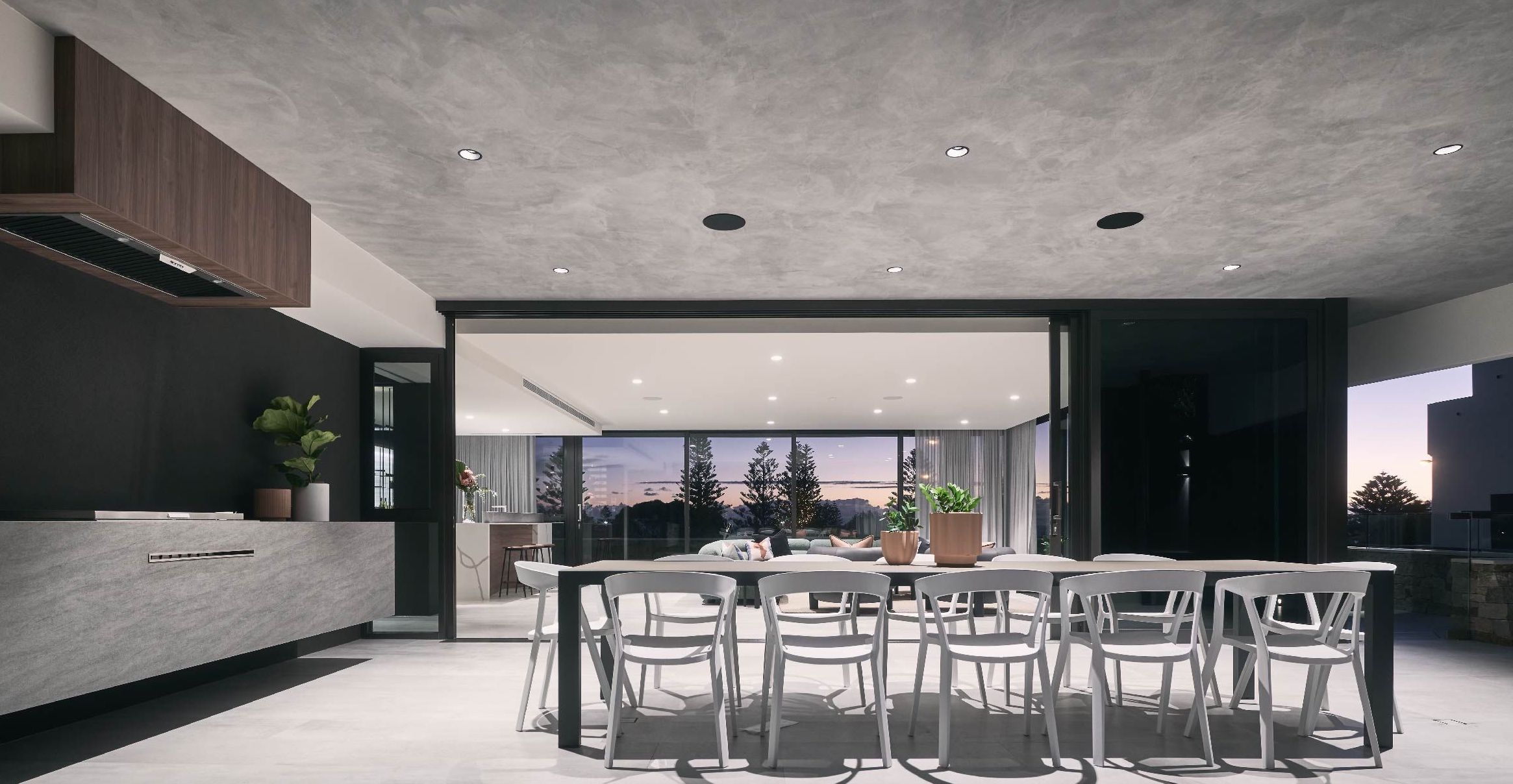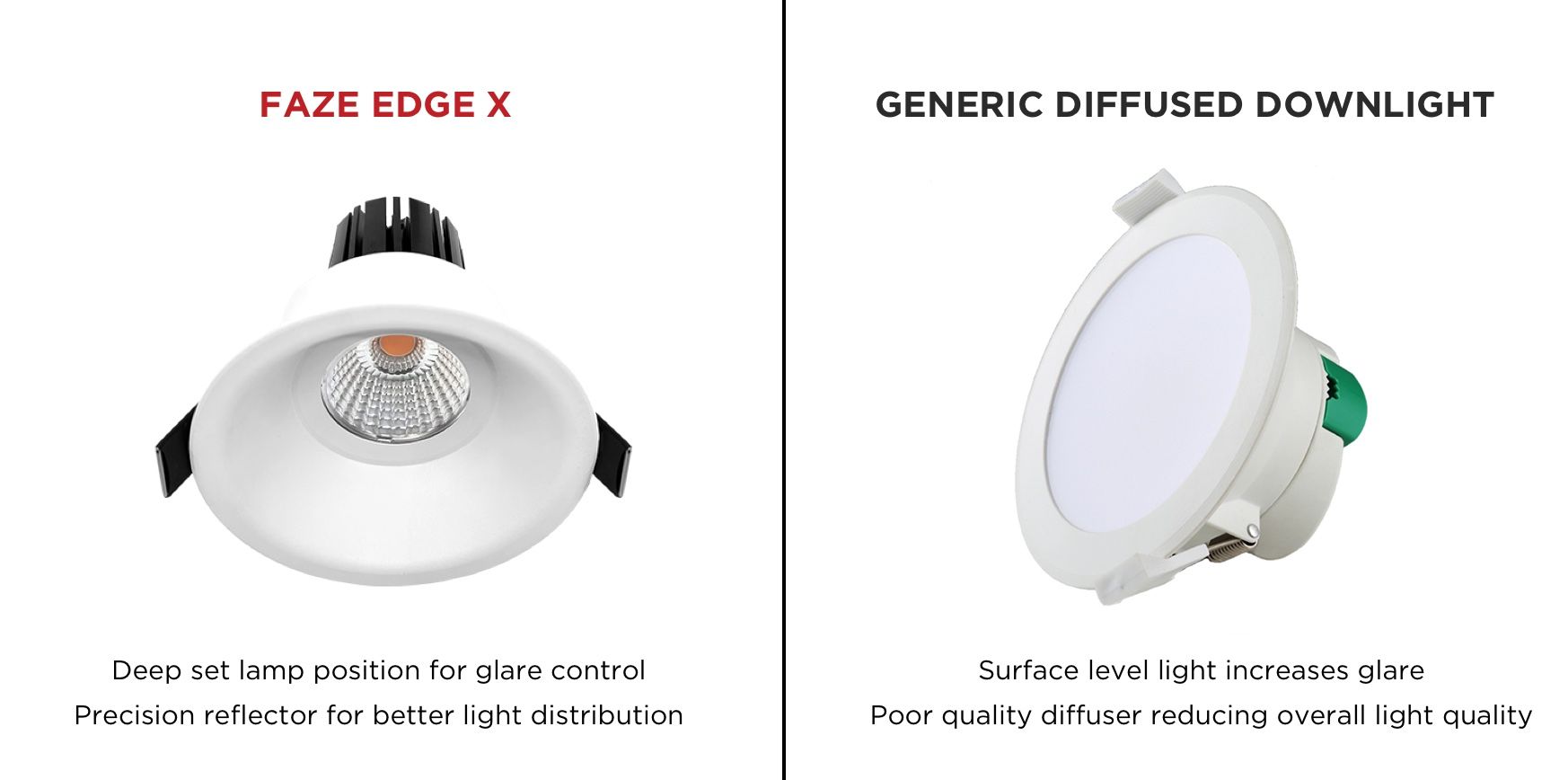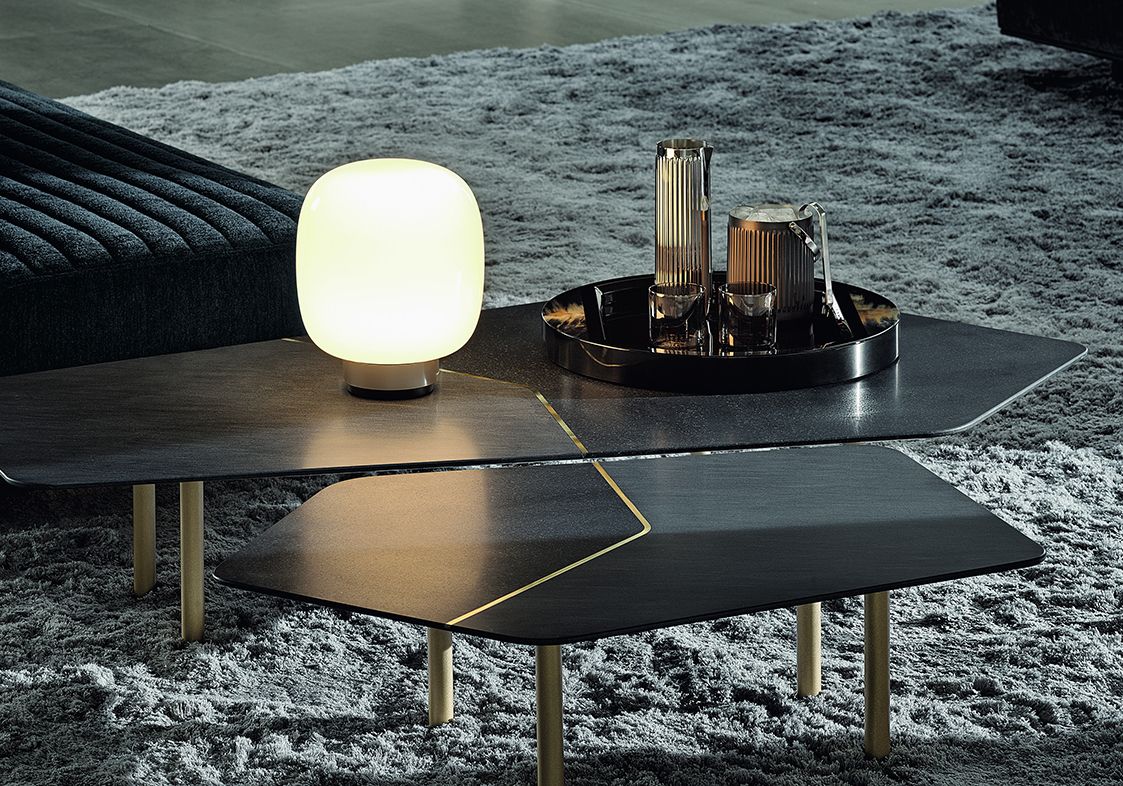Dealing with downlight glare
By Radiant Lighting | 05 Dec 2022 | 0 Comments

Light truly can enhance a space. With the correct use of task, ambient and accent lighting, it can take a space from ordinary to extraordinary.
However, light can also create a quite uncomfortable sensation when used incorrectly. That uncomfortable feeling we’re going to discuss today is known as glare.
What is glare?
Glare is a visual sensation caused by excessive and uncontrolled brightness in the field of view. Put simply, it’s when there’s a stark contrast between a bright light vs a dull background.
This description is challenging because it also describes contrast. Light contrast can give our spaces depth but too much, and we’re caught squinting and covering our eyes.
Why are some downlights glary?
In essence, the reason some downlights are glary and some are not is due to how visible to the light is coming out of the fitting compared to the light level of the surface around the light.
What does that mean?
During the day, your white ceiling is bright from natural light and when you turn on your downlights, there’s not a large contrast between the white of the ceiling and your downlight. But, when the sun comes down and your ceiling is deep in shadow, your downlights are suddenly very intense bright spots compared to the ceiling. Cue - glare.
What’s the solution?
There’s multiple approaches we can take to reduce glare in a space. Firstly, consider low-glare downlights. When a downlight has the LED/globe set deeper into the fitting, then you are not actually able to see the light source and thus, the glare is reduced.
For example, consider the Faze Edge X which can produce a tremendous amount of light while having a deep set lamp position to control glare.

Energy efficient downlights have become ubiquitous throughout Australian homes but at the same time, the amount of low quality downlightslights has increased. Generic, low quality downlights are still energy efficient but they use cheap components that cause uncomfortable amounts of glare. High quality downlights certainly exist but you need to know what to look for.
A second option, is to consider using the three types of lighting available to us. If our previous articles, we’ve discussed the importance of having multiple forms of lighting - ambient, task and accent. Downlights are a type of ambient lighting and should form a part of your lighting design but not rely on them entirely. If you’re sitting down to read a book, you could just turn on a table lamp instead of the entire room of downlights.

Pictured: Tooy Legier 557.32
A follow on to this second point is to manage the overall brightness of the surface the light is sitting in. If you turn on a bunch of lamps, pushing light up to the ceiling, then the downlights are instantly less glary – because the ceiling is brighter and so the contrast between the 2 surfaces is reduced.
Creating the perfect lighting environment in your home requires consideration, careful fitting selection and a trained eye to balance the contrast so you have a lively, welcoming and warm home to enjoy everyday.
Here at Radiant Lighting, we are architectural lighting designers who specialise in creating these perfect environments. If you would like to discuss reducing glare in your home, please send us an email at sales@radiantlighting.com.au.
Back To Blog Entries